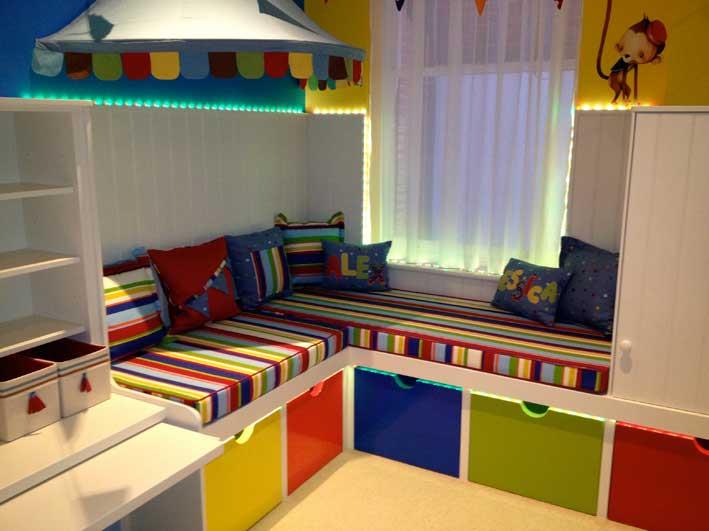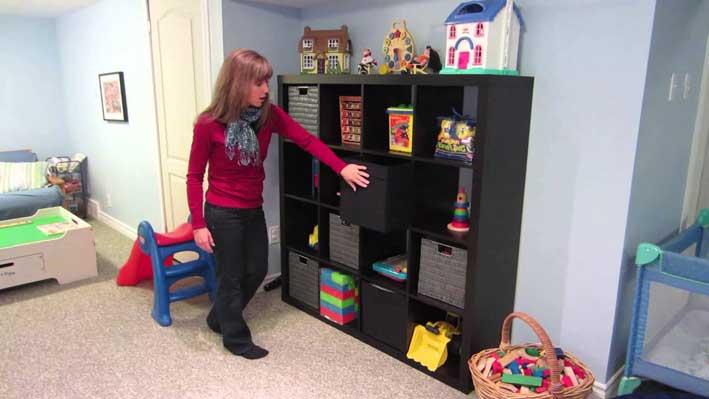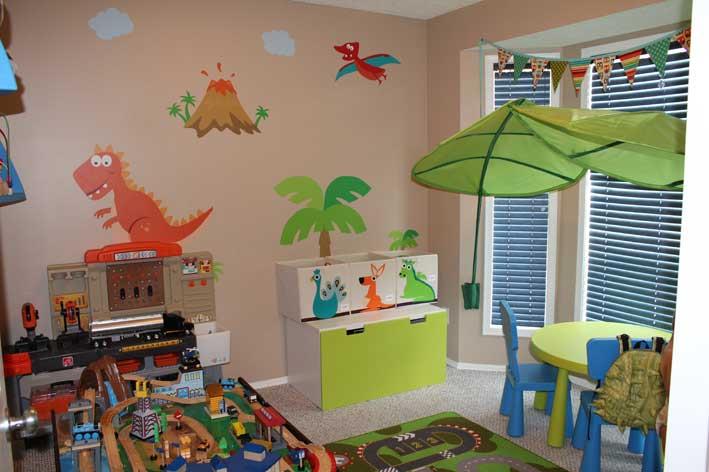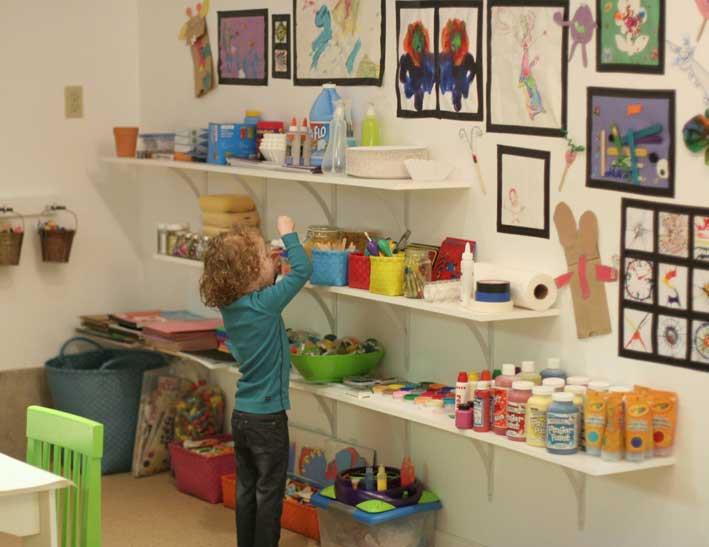Children love a room they can call their own and adults welcome the chance to keep their areas free of all their toys and treasures.
Playrooms offer a space for children to get together with their friends, build dens, leave their toys, games, painting and model making things out until they have finished with them and use their screens and playstations without disturbing the rest of the household. In short they are a haven of fun.
Not all homes have enough rooms to allocate one just for play, but it is worth considering how often a dining room is used for that purpose, or if the largest bedroom can be partitioned off to provide a sleep/play suite. And children are often happy enough with a very small bedroom if they have other indoor space in which to spend any precious time that is their own.

The size of a playroom is not quite as important as what is in it, and how well it suits the child or children who use it. And it certainly does not need to be super sleek and stylish; it's for the kids to hang out in after all. Absolutely vital is plenty of storage, some rugs to roll about on, floor space to wheel around, if there is enough space, a table, which can fold up against a wall if necessary, some chairs, bean bags, an old sofa with masses of cushions to bounce on and plain walls, coated so they can be used for budding Banksys.
Involve the children as soon as plans for their room are considered. They will have plenty of wonderful ideas for a theme or decorations. Bizarre as some of these may be, don't shoot them down immediately. This is their room; you have the rest of the place to play with. Explain rationally why certain things may be too expensive, dangerous or big to include and start drawing up a chart of materials. Choose machine-washable, easy-care fabrics, wipe-down surfaces and vibrant, happy colours that don't show every mark.

If any DIY or installations are needed it is probably best to get these done while the children are nowhere near, for fairly obvious reasons. They will however enjoy helping decide where furniture can go and where their toys and so on can be stored away. Labels on the draws and doors can allocate certain space to each child, and older children may well appreciate a cupboard that locks so they can hide special treasures away from their siblings. They should be responsible for keeping the key safe. But obviously you will have a copy, just in case.
If the playroom is to be in the family's forever home it is a good idea to have one eye on its evolution. It's a cliché to say children grow up so quickly but it's a reality too. Furthermore, they will very likely grow fond of their zone and gradually introduce ways to make less of a play room and more of a study/chill out area.
If you can bare to anticipate this at the outset you could save much time and cash going for a design and fittings that can grow with the children and morph into a future space into which they would be both proud and delighted to bring their friends. There will be definite advantages to this, honestly.
To coin another cliché now apparently obsolete: 'Children should be seen and not heard', what parents can truthfully put their hands on their hearts and claim there are not sometimes glad to see the back of their little darlings now and again? Creating a playroom could well turn out to be one of the best things you ever did; although in this day and age, perhaps not at the expense of a garage.

Playing it safe
Every bit as important as the room's appearance and contents is its security. This should be focused on the youngest user. Much the same as in children's bedrooms:
All electrical sockets should be out of reach and child-proofed.
If the there are large windows, higher than ground floor they should be locked or have safety bars fitted. Use reinforced glass, if there are window seats, even in rooms used by older children. And make sure blind and curtains have no loose strings attached.
Only include ladders or a climbing wall after careful consideration.
Furniture and fittings must be the right size, sturdy and steady with no hard or sharp edges. Draws and cupboards should have easy access, so tidying up is not a boring battle.
Fabrics should be chemical free and fireproofed and all paint water based or organic, if possible. It is probably a good idea to strip and repaint any up-cycled furniture you want to use, if it is very old.
Rugs need to be non-slip; so do floors, which should be laid with a material that will provide a 'soft' landing in case of falls.

Draws should be designed so they cannot be pulled completely out of their sockets. Handles on anything must be securely attached and easy for children to use.
If you are using baskets and boxes on shelves only put light items in them. Heavy contents could cause injuries if they spill out onto a child who is reaching up for them.
Make sure all lighting is fixed and cannot be reached by young children. Heating and air-conditioning units should also be out reach of all children. Portable heaters should never be in a playroom, even switched off, unless an adult is there.